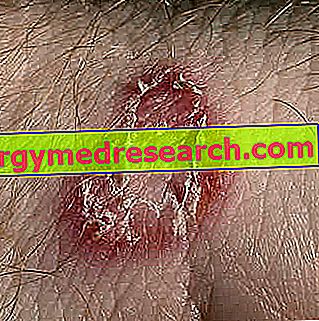Related articles: Dermatofibroma
Definition
Dermatofibroma is a skin cancer of a benign nature, quite common.
This skin neoformation consists of a proliferation of fibroblasts with localization in the dermis.
Dermatofibroma usually appears in adults, especially females, typically around 20-30 years of age.
The exact etiology is still unknown, however the onset of these lesions is often preceded by a trauma, especially against the skin of the lower limbs. Other possible predisposing factors are reactive processes, such as folliculitis and insect bites.

More photos Dermatofibroma
Most common symptoms and signs *
- Skin discoloration
- Nodule
- papules
- itch
- Skin Ulcers
Further indications
The dermatofibroma appears as a small papule or a hard lump. Usually, this lesion is slightly detected on the skin level and measures 0.5-1.5 cm in diameter (in most cases, the dimensions are 7-10 mm).
On palpation, this neoformation is perceived as a lentil contained in the thickness of the dermis.
The dermatofibroma is covered by epidermis pigmented more intensely than the surrounding skin: the color of the lesion can turn from pink to light brown on light skins and from brown to black on dark ones; moreover, some of these new forms seem paler in the center.
Generally, dermatofibroma occurs on the thighs or legs, but it can also appear at the level of the arms, trunk or any other site of the body.
In most cases, the dermatofibroma is asymptomatic or causes minimal discomfort. Only in some cases, the lesions can cause itching or ulcerate after modest traumas, especially when they are above a bone level (eg tibia).
The diagnosis is clinical and supported by dermoscopy; when it is plucked between the fingers, this skin neoformation is introflected in a characteristic way.
The dermatofibroma can regress spontaneously; when it causes discomfort to the patient, the therapy involves the removal of the nodule, which however can recur.



